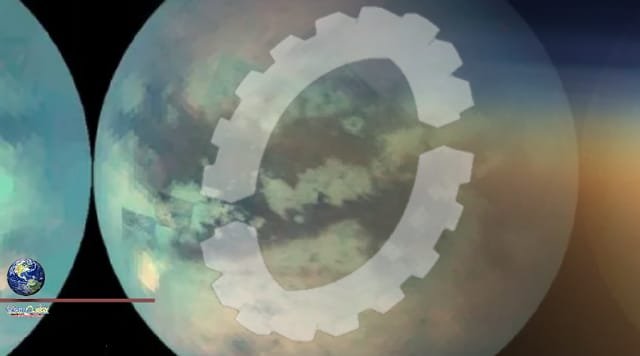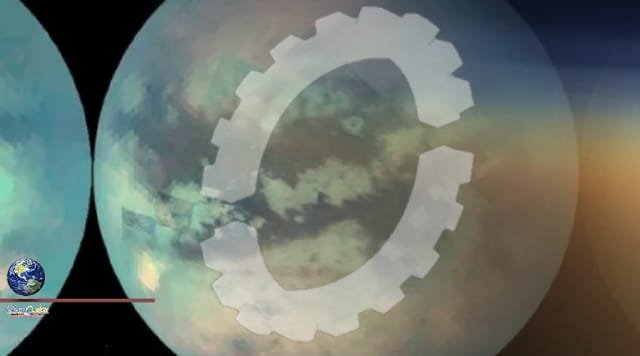A new hypothesis reveals that a global sedimentary cycle driven by seasons could explain the formation of landscapes on Saturn’s moon Titan. The research shows the alien world may be more Earth-like than previously thought.

Titan, Saturn’s moon, appears very much like Earth from space, with rivers, lakes, and seas filled by rain that pours through a thick atmosphere. While these landscapes appear to be familiar, they are made of materials that are undoubtedly different – liquid methane streams streak Titan’s frozen surface, while nitrogen winds produce hydrocarbon sand dunes.
The presence of these materials – whose mechanical properties are vastly different from those of silicate-based substances that make up other known sedimentary bodies in our solar system – makes Titan’s landscape formation enigmatic. By identifying a process that would allow for hydrocarbon-based substances to form sand grains or bedrock depending on how often winds blow and streams flow, Stanford University geologist Mathieu Lapôtre and his colleagues have shown how Titan’s distinct dunes, plains, and labyrinth terrains could be formed.
Titan, which is a target for space exploration because of its potential habitability, is the only other body in our solar system known to have an Earth-like, seasonal liquid transport cycle today. The new model, recently published in the journal Geophysical Research Letters, shows how that seasonal cycle drives the movement of grains over the moon’s surface.
This composite image shows an infrared view of Saturn’s moon Titan from NASA’s Cassini spacecraft, acquired during the mission’s “T-114” flyby on November 13, 2015. The spacecraft’s visual and infrared mapping spectrometer (VIMS) instrument made these observations, in which blue represents wavelengths centered at 1.3 microns, green represents 2.0 microns, and red represents 5.0 microns. A view at visible wavelengths (centered around 0.5 microns) would show only Titan’s hazy atmosphere. The near-infrared wavelengths in this image allow Cassini’s vision to penetrate the haze and reveal the moon’s surface. Credit: NASA
“Our model adds a unifying framework that allows us to understand how all of these sedimentary environments work together,” said Lapôtre, an assistant professor of geological sciences at Stanford’s School of Earth, Energy & Environmental Sciences (Stanford Earth). “If we understand how the different pieces of the puzzle fit together and their mechanics, then we can start using the landforms left behind by those sedimentary processes to say something about the climate or the geological history of Titan – and how they could impact the prospect for life on Titan.”
In order to build a model that could simulate the formation of Titan’s distinct landscapes, Lapôtre and his colleagues first had to solve one of the biggest mysteries about sediment on the planetary body: How can its basic organic compounds – which are thought to be much more fragile than inorganic silicate grains on Earth – transform into grains that form distinct structures rather than just wearing down and blowing away as dust?
On Earth, silicate rocks and minerals on the surface erode into sediment grains over time, moving through winds and streams to be deposited in layers of sediments that eventually – with the help of pressure, groundwater, and sometimes heat – turn back into rocks. Those rocks then continue through the erosion process and the materials are recycled through Earth’s layers over geologic time.
On Titan, researchers think similar processes formed the dunes, plains, and labyrinth terrains seen from space. But unlike on Earth, Mars, and Venus, where silicate-derived rocks are the dominant geological material from which sediments are derived, Titan’s sediments are thought to be composed of solid organic compounds. Scientists haven’t been able to demonstrate how these organic compounds may grow into sediment grains that can be transported across the moon’s landscapes and over geologic time.
Source: this news is originally published by scitechdaily
